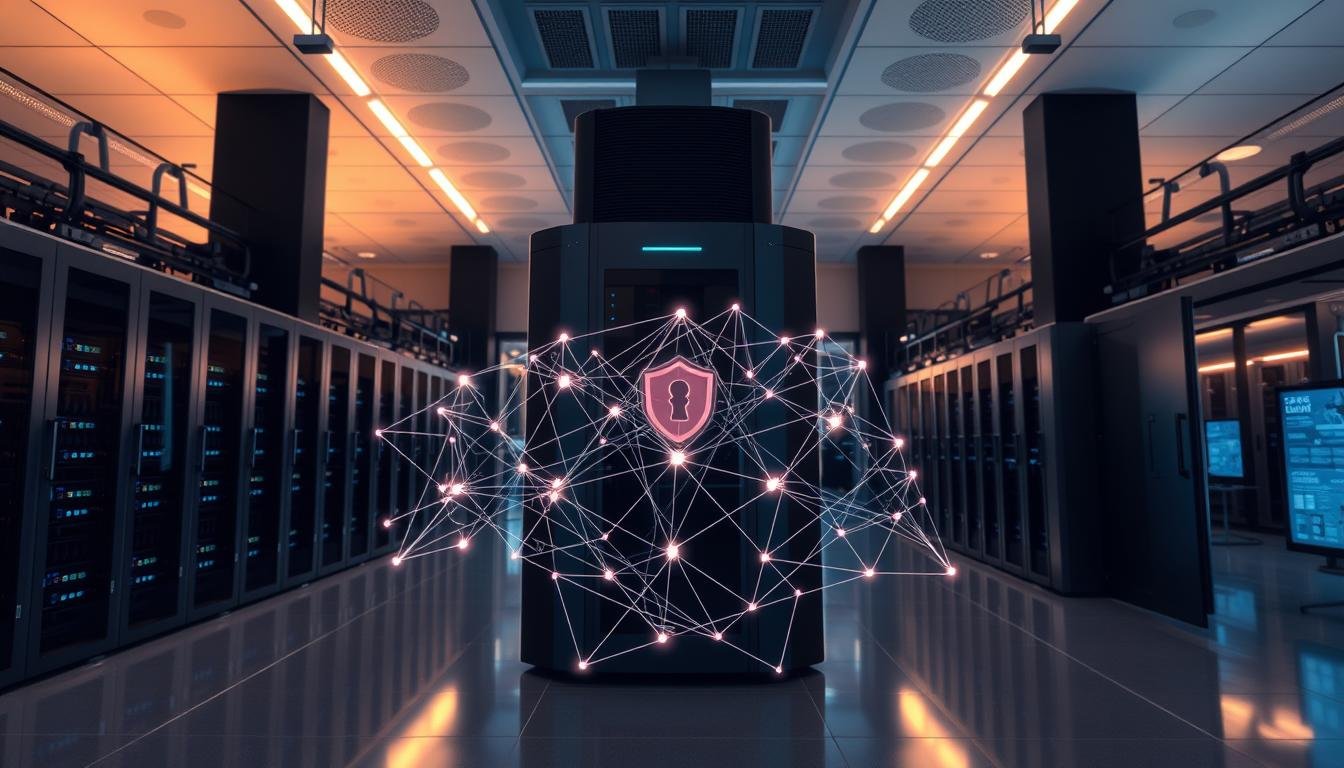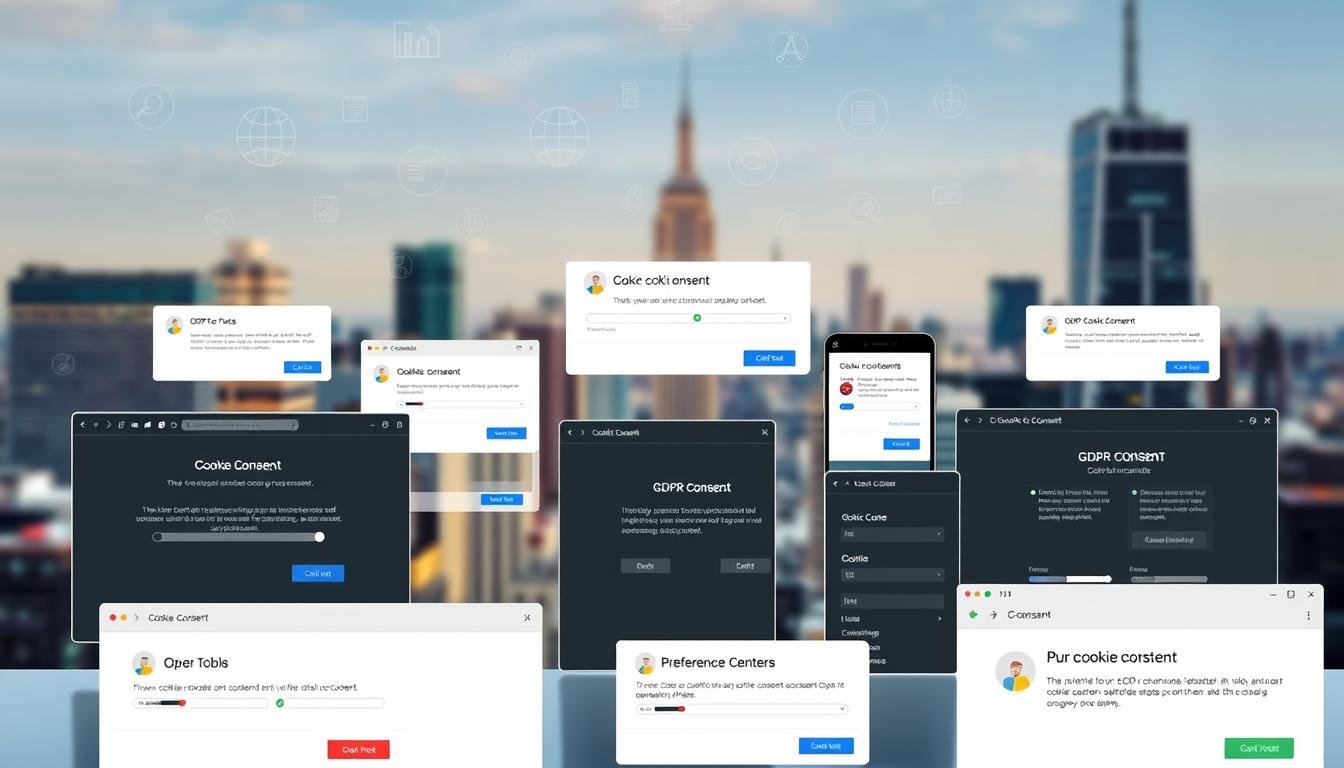Is your organization still relying on outdated perimeter-based security? With ransomware attacks surging by 62% and remote work becoming the norm, traditional methods are no longer enough. The modern approach to cybersecurity is zero trust, a framework designed to protect sensitive data in today’s dynamic environment.
Zero trust operates on the principle of “never trust, always verify.” Unlike the old “castle-and-moat” model, it ensures that every user and device is authenticated before granting access. This approach is especially critical as organizations adapt to hybrid work environments and face increasingly sophisticated threats.
Adopted by industries like finance and healthcare, zero trust is backed by standards like NIST 800-207. Studies show it can reduce the impact of breaches by 73%, making it a must-have for modern enterprises. By 2025, Gartner predicts that 60% of organizations will adopt this framework. Ready to learn how it works and why it’s essential? Let’s dive in.
Key Takeaways
- Zero trust replaces outdated perimeter-based security models.
- Ransomware attacks have increased by 62%, driving adoption.
- Remote work has accelerated the need for robust security measures.
- NIST 800-207 is the foundational standard for zero trust.
- Organizations using zero trust see a 73% reduction in breach impact.
- Finance and healthcare sectors are leading in zero trust adoption.
- By 2025, 60% of organizations will implement zero trust.
What Is a Zero-trust Network?
In today’s digital landscape, traditional security models are no longer sufficient. The zero trust approach has emerged as a modern framework to address evolving threats. Unlike older methods, it operates on the principle of “never trust, always verify.”
Defining Zero-trust Security
Zero trust security was first introduced by Forrester in 2010. It shifts the focus from location-based access to identity-centric verification. This means every user and device must prove their legitimacy before gaining access to resources.
The framework is built on the idea of assuming a breach. Instead of trusting anyone inside the network, it continuously monitors and verifies all activity. This mindset is critical in preventing unauthorized access and minimizing risks.
Core Principles of Zero-trust
The zero trust architecture is guided by three key principles. First, continuous verification ensures that every request is authenticated in real-time. Second, least privilege limits users to only the resources they need. Third, microsegmentation divides the network into smaller, secure zones.
These principles work together to create a robust defense system. For example, the Colonial Pipeline breach highlighted the dangers of relying on outdated methods. A zero trust model could have significantly reduced the impact of such an attack.
Frameworks like NIST 800-207 and the NSA’s 2021 maturity model provide guidelines for implementation. By adopting these standards, organizations can enhance their security and protect against modern threats.
Why Zero-trust Networks Are Crucial for Modern Cybersecurity
As cyber threats grow more sophisticated, traditional defenses are falling short. The rise of remote work, cloud adoption, and IoT expansion has exposed significant gaps in legacy security models. Organizations now face unprecedented risks, with 89% of breaches involving compromised credentials.
Traditional perimeter-based systems, like firewalls and VPNs, were designed for a different era. Today, they struggle to protect against advanced threats like lateral movement and unauthorized access. For example, the SolarWinds breach highlighted how attackers can exploit weak perimeters to infiltrate entire networks.
The Evolution of Network Security
In the 1990s, firewalls were the cornerstone of security. By the 2020s, the shift to remote work and cloud platforms necessitated more advanced solutions like SASE (Secure Access Service Edge). This evolution reflects the need for continuous verification and microsegmentation in modern systems.
Legacy models often fail to address the complexity of hybrid workforces. VPNs, once a reliable solution, now pose significant vulnerabilities. With 68% of organizations using more than five cloud platforms, the risks of shadow IT and unauthorized SaaS apps have skyrocketed.
Challenges with Traditional Security Models
Traditional methods rely on the assumption that everything inside the network is safe. This outdated mindset leaves organizations vulnerable to lateral movement attacks. For instance, the Colonial Pipeline breach demonstrated how attackers can exploit weak perimeters to cause widespread damage.
Cloud adoption has further complicated security. Legacy models struggle to protect multi-cloud environments, creating gaps that attackers can exploit. Compliance drivers like HIPAA, GDPR, and CMMC add another layer of complexity, requiring organizations to adopt more robust frameworks.
By 2025, the IoT landscape is expected to include 25 billion devices, amplifying the need for advanced security measures. The NSA’s 2022 advisory on critical infrastructure underscores the urgency of adopting modern frameworks to protect against evolving threats.
How Zero-trust Networks Work
Modern cybersecurity demands a proactive approach to safeguard sensitive data. Zero-trust frameworks operate on three core principles: continuous verification, least privilege access, and microsegmentation. These strategies work together to create a robust defense against evolving threats.
Continuous Verification
In a zero-trust model, every user and device undergoes verification before gaining access. Session tokens refresh every 15-30 minutes, ensuring real-time authentication. This process minimizes risks by constantly validating identity and assessing potential threats.
Advanced techniques like User Entity Behavior Analytics (UEBA) and Layer 7 inspection enhance this process. These tools analyze behavior patterns and inspect traffic at the application level, providing an additional layer of security.
Least Privilege Access
Least privilege ensures users only have access to the resources they need. Just-In-Time (JIT) provisioning grants temporary permissions, reducing the attack surface. Conditional policies based on 12+ parameters further refine this approach.
For example, Microsoft Azure AD implements conditional access to enforce these policies. This method prevents unauthorized users from accessing critical applications and data.
Microsegmentation
Microsegmentation divides the network into smaller, secure zones. This strategy reduces the attack surface by up to 80%, limiting lateral movement. AWS VPC and zero-trust segmentation are examples of this technique in action.
By isolating workloads and encrypting network traffic, organizations can protect sensitive applications and data. This approach is particularly effective in multi-cloud environments, where risks are higher.
Key Components of a Zero-trust Architecture
Building a secure digital environment requires a strong foundation of essential components. These elements work together to ensure every user and device is verified before accessing resources. Let’s explore the critical pillars that make this framework effective.
Identity and Access Management (IAM)
At the core of any security strategy is identity verification. IAM systems ensure only authorized users gain access to sensitive data. Solutions like Okta and Ping Identity provide robust tools for managing credentials and enforcing access policies.
Certificate-based device authentication and zero-touch enrollment workflows simplify the process. These protocols reduce human error and enhance security. By integrating with SIEM platforms like Splunk or Sentinel, organizations can monitor access in real-time.
Multi-Factor Authentication (MFA)
MFA adds an extra layer of protection by requiring multiple forms of authentication. Microsoft reports that MFA blocks 99.9% of account compromises, making it a must-have tool. Standards like FIDO2 and WebAuthn ensure compatibility across devices.
Hardware security keys, such as Yubikey, provide a physical layer of security. Biometric authentication, like fingerprint or facial recognition, further enhances protection. Session timeout best practices ensure users are continuously verified.
Endpoint Security
Protecting devices is critical in a distributed workforce. Endpoint Detection and Response (EDR) tools detect 95% of advanced threats, safeguarding against malware and ransomware. Platforms like Microsoft Endpoint Manager (MEM) streamline device management.
TPM 2.0 chips ensure hardware-level security, while zero-touch enrollment simplifies device setup. By isolating endpoint devices and encrypting traffic, organizations can minimize risks and protect sensitive data.
Zero-trust Network Explained: Core Principles
In an era of escalating cyber threats, businesses must rethink their security strategies. The principles of a modern framework focus on minimizing risks and protecting sensitive data. By adopting these strategies, organizations can stay ahead of evolving threats.
Never Trust, Always Verify
The first principle is to “never trust, always verify.” This means every user and device must prove their legitimacy before gaining access. Continuous verification ensures that only authorized entities can interact with critical resources.
Tools like dynamic policy engines and User Entity Behavior Analytics (UEBA) enhance this process. These solutions analyze behavior patterns and enforce real-time access controls, reducing the risk of unauthorized entry.
Limit the Blast Radius
Limiting the blast radius is another key principle. By segmenting the environment into smaller zones, organizations can contain potential breaches. This approach minimizes the impact of an attack and prevents lateral movement.
Techniques like microsegmentation and container security in Kubernetes are effective in achieving this. These methods isolate workloads and encrypt traffic, ensuring sensitive data remains protected.
Automate Context Collection and Response
Automation plays a crucial role in modern security frameworks. Automated incident response playbooks and threat intelligence feeds streamline the detection and mitigation of threats. This reduces response times and enhances overall efficiency.
Platforms like SOAR (Security Orchestration, Automation, and Response) and XDR (Extended Detection and Response) are widely used for this purpose. By aligning with frameworks like MITRE ATT&CK, organizations can ensure a proactive defense strategy.
Implementing Zero-trust in Your Organization
Adopting a modern security framework requires careful planning and execution. For many organizations, the transition involves a 14-month timeline and an average cost of $2.4 million. However, the long-term benefits of enhanced security and compliance make it a worthwhile investment.
Steps to Adopt Zero-trust
Start with a 6-phase migration roadmap. This includes assessing your current infrastructure, defining your security policy, and integrating legacy systems. A phased approach ensures minimal disruption to operations.
Change management is critical. Train your staff to understand the new framework and its benefits. Pilot programs can help test the system before full deployment, ensuring a smooth experience for all users.
Partnering with Managed Service Providers (MSPs) can streamline the process. They offer expertise in vendor selection, budget allocation, and FedRAMP certification, making the transition more efficient.
Common Challenges and Solutions
One major challenge is integrating legacy systems with modern cloud platforms. Tactics like API-based integrations and containerization can bridge this gap effectively.
Another hurdle is calculating ROI. Use models that factor in reduced breach risks and improved compliance to justify the investment. Staff training is also essential to ensure everyone understands the new policy and procedures.
Finally, budget constraints can slow down implementation. Break down costs into manageable phases and prioritize critical components to stay on track. With the right strategy, your organization can successfully adopt this framework and secure its future.
Benefits of a Zero-trust Network
Organizations are increasingly turning to advanced frameworks to address modern security challenges. A modern approach offers significant advantages, from reducing risks to streamlining operations. Let’s explore the key benefits of adopting this framework.
Enhanced Security
One of the primary benefits is enhanced security. By continuously verifying users and devices, this framework minimizes the risk of unauthorized access. Tools like multi-factor authentication and microsegmentation add layers of protection.
Studies show that organizations using this approach reduce breach impact by up to 73%. Additionally, a 5:1 consolidation ratio for security tools simplifies management and improves efficiency.
Improved Compliance
Adopting this framework also improves compliance. It aligns with standards like SOC 2 Type 2 and GDPR Article 32, ensuring organizations meet regulatory requirements. Deloitte reports that this approach can speed up audit completion by 60%.
By integrating compliance pathways, businesses can reduce penalties and build trust with stakeholders. This is especially critical in industries like finance and healthcare.
Scalability and Flexibility
Another advantage is scalability. This framework supports multi-cloud environments, making it ideal for modern infrastructure. It integrates seamlessly with DevOps pipelines and enhances BYOD policies.
With the ability to adapt to changing needs, organizations can future-proof their security strategies. This flexibility is essential in today’s dynamic digital landscape.
- Quantitative risk reduction metrics ensure measurable improvements.
- Multi-cloud management efficiencies streamline operations.
- Cyber insurance premiums can be reduced by up to 20%.
- M&A security integration simplifies transitions during mergers.
- Zero trust Maturity Model stages guide implementation.
Zero-trust and Cloud Security
With 79% of enterprises using three or more cloud platforms, securing multi-cloud environments has become a top priority. Organizations must ensure that sensitive data remains protected across diverse applications and devices. This is especially critical as remote workforces demand secure access to resources from anywhere.
Securing Multi-cloud Environments
Managing multiple cloud platforms introduces complexity. Tools like Cloud Security Posture Management (CSPM) help monitor and enforce security policies across environments. For example, AWS S3 bucket protection ensures that sensitive data is not exposed to unauthorized users.
Azure AD Conditional Access adds another layer of security by verifying user identities before granting access. Similarly, Google Cloud’s BeyondCorp framework provides secure connectivity without relying on traditional VPNs. These solutions streamline operations while minimizing risks.
Zero-trust for Remote Workforces
Remote work has transformed how organizations operate. With 63% of employees needing secure access, solutions like SD-WAN and CASB (Cloud Access Security Broker) are essential. These tools ensure that remote devices meet security standards before connecting to corporate applications.
Always-on VPNs are being replaced by more efficient models like Zscaler, which reduces latency and improves performance. Remote device posture checks further enhance security by verifying the health of devices before granting access.
By adopting these strategies, organizations can protect their data and ensure seamless connectivity for remote teams. This approach not only enhances security but also supports the flexibility needed in today’s dynamic work environment.
Zero-trust vs. Traditional Network Security
The shift from traditional security models to a more robust framework has become essential in today’s threat landscape. Organizations are moving away from outdated methods to adopt a proactive approach that minimizes risks and enhances protection.
Key Differences
Traditional security relies on a perimeter-based model, assuming everything inside the network is safe. This outdated mindset leaves organizations vulnerable to lateral movement and unauthorized access. In contrast, the modern approach operates on the principle of “never trust, always verify.”
Legacy systems often fail to address the complexity of hybrid workforces and multi-cloud environments. The new model ensures continuous verification, least privilege access, and microsegmentation. These strategies reduce the attack surface and limit the blast radius of potential breaches.
Why Zero-trust is Superior
Adopters of this framework report a 94% improvement in security, according to CrowdStrike. It also enables 5x faster breach detection, as highlighted by MITRE. Unlike traditional methods, it protects against zero-day exploits and third-party risks effectively.
CAPEX and OPEX cost analyses show that the new model is more efficient in the long run. It also simplifies compliance with industry standards, reducing penalties and audit times. By focusing on east-west traffic protection and logical segmentation, it ensures comprehensive coverage.
Penetration test results and Gartner Magic Quadrant shifts further validate its superiority. Organizations that adopt this framework not only enhance their security but also future-proof their operations against evolving threats.
Zero-trust and Industry Standards
In the ever-evolving world of cybersecurity, aligning with industry standards is no longer optional—it’s a necessity. Organizations must adopt frameworks that ensure robust security while meeting regulatory requirements. This approach not only protects sensitive data but also builds trust with stakeholders.
NIST 800-207 Guidelines
The NIST 800-207 framework provides a comprehensive blueprint for implementing modern security measures. It emphasizes continuous verification, least privilege access, and microsegmentation. These principles ensure that every user and device is authenticated before interacting with critical resources.
For example, the framework aligns with FedRAMP Moderate requirements, ensuring 100% compliance for federal agencies. It also maps to ISO 27001 controls, providing a clear path for organizations to enhance their security posture.
Aligning with Compliance Requirements
Meeting compliance standards is essential for organizations across industries. Frameworks like HIPAA, PCI DSS 4.0, and GDPR require strict data protection measures. By adopting NIST 800-207, businesses can streamline their compliance efforts and reduce audit times.
For instance, GDPR’s data minimization principle is easily implemented through zero-trust strategies. Similarly, CMMC Level 4 requirements are met by leveraging microsegmentation and continuous monitoring. These standards ensure that organizations stay ahead of evolving threats while maintaining regulatory alignment.
Zero-trust for Protecting Against Modern Threats
In the face of evolving cyber risks, organizations need advanced strategies to safeguard their operations. Modern frameworks provide robust protection against threats like ransomware and insider attacks. By focusing on continuous verification and least privilege, businesses can significantly reduce vulnerabilities.
Ransomware and Zero-trust
Ransomware attacks have surged, with 74% of them being blocked through least privilege access. This approach ensures that users only have the permissions they need, minimizing the risk of unauthorized activity. Techniques like double extortion mitigation and cryptowall attack simulations further enhance defenses.
Session recording tools and blockchain audit trails provide additional layers of security. These measures help detect and respond to ransomware threats in real-time. By adopting these strategies, organizations can protect their data and maintain operational continuity.
Insider Threats and Zero-trust
Insider threats account for 34% of breaches, making them a significant concern. User Entity Behavior Analytics (UEBA) can detect unusual activity, such as data exfiltration patterns. Privileged access management ensures that only authorized personnel can access sensitive information.
Legal hold integrations and dark web monitoring add another layer of protection. These tools help identify potential risks from insiders and third parties. By implementing these measures, businesses can safeguard their data and reduce the impact of insider threats.
Zero-trust Network Access (ZTNA)
The rise of remote work has reshaped how organizations approach secure connectivity. Traditional VPNs, once the go-to solution, are now being replaced by more advanced methods. Zero-trust Network Access (ZTNA) is emerging as a modern framework to ensure secure access to critical resources.
What is ZTNA?
ZTNA is a security solution that grants access to applications based on strict verification. Unlike VPNs, which provide broad network access, ZTNA ensures users only connect to the resources they need. This approach minimizes risks and enhances overall security.
Gartner reports that 67% of organizations are replacing VPNs with ZTNA. This shift is driven by the need for better performance and lower latency. For example, Palo Alto’s ZTNA solution adds just 5ms of latency overhead, making it ideal for modern applications.
How ZTNA Enhances Security
ZTNA improves security by implementing least privilege access. Users are verified before they can connect to any application or data. This reduces the attack surface and prevents unauthorized access.
Advanced features like DNS filtering and TLS 1.3 encryption further enhance protection. ZTNA also integrates seamlessly with SD-WAN and IoT devices, making it a versatile solution for diverse environments.
- ZTNA vs SASE vs SSE: Understand the differences and benefits.
- Appgate vs Cloudflare: Compare leading ZTNA providers.
- Broker architecture: Dive into how ZTNA brokers manage secure connections.
- Private app connectivity: Ensure secure access to internal applications.
- B2B collaboration: Simplify secure partnerships with ZTNA.
Zero-trust in Action: Real-world Use Cases
Real-world applications demonstrate the effectiveness of advanced security frameworks. From healthcare to finance, organizations are leveraging these strategies to protect their data and enhance their infrastructure. Let’s explore how this approach is transforming industries and securing critical systems.
Case Study: Enterprise Implementation
JPMorgan Chase’s adoption of a modern security framework yielded an 18-month ROI. By implementing least privilege access and microsegmentation, the organization reduced its attack surface significantly. This solution not only enhanced security but also streamlined compliance across its global systems.
Financial transaction monitoring and PCI scope reduction were key focus areas. These measures ensured that sensitive data remained protected while improving operational efficiency. The success of this implementation highlights the scalability of advanced security frameworks for large enterprises.
Case Study: Government Sector
The Department of Defense’s Thunderdome program is a prime example of securing critical infrastructure. This initiative focuses on cross-domain solutions and FedRAMP High authorization, ensuring robust protection for sensitive data. By adopting a modern security framework, the DoD has enhanced its defense against evolving threats.
Smart city systems and energy sector ICS protection are also benefiting from this approach. These use cases demonstrate how advanced strategies can safeguard complex infrastructure while meeting stringent compliance requirements.
Conclusion
As organizations navigate an increasingly complex threat landscape, adopting advanced security measures is no longer optional. A 12-month implementation roadmap can guide businesses in transitioning to a robust framework, ensuring seamless integration and minimal disruption.
Looking ahead, the 2024 threat landscape demands proactive strategies. CISOs are prioritizing frameworks that minimize risks and enhance access controls. Tools like architecture checklists and maturity assessments can simplify this process, offering measurable benefits.
Emerging standards like ISO/IEC 27035 and NIST SP 1800-35 provide clear guidelines for implementation. These frameworks not only improve security but also ensure compliance with evolving regulations. A final cost-benefit analysis highlights the long-term value of this approach.
Take the next step by conducting a maturity assessment and leveraging AI/ML for policy automation. By staying ahead of threats, your organization can secure its future and protect critical assets.







